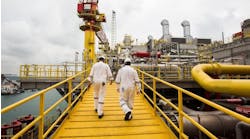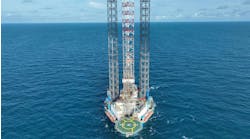Richard Seeger
Seascape Technical Resources Inc.
On a daily basis, vessels around the world mobilize to conduct major marine geoscience surveys for oil and gas operators, engineering companies, pipe- line operators, cable companies, and construction projects. Involving geophysical, geotechnical, oceanographic, hydrographic, and environmental data acquisition instrumentation and equipment, small fortunes are invested to satisfy the objectives of a client company. The surveys may be done for any number of reasons and uses.
These surveys tend to be costly, from a few thousand dollars to well over $100,000 per day and may involve several survey vessels, AUVs, ROVs, lift boats, barges, aircraft, specialized marsh vehicles, or arctic systems. Obviously, the client’s interest is in obtaining necessary data in the shortest amount of time. Survey contractors usually are compensated on either a lump-sum or day rate basis. Lump-sum contracts promise delivery of certain data and interpretation reports at a fixed price. Any additions or changes to the program in the field can trigger additional charges for time and material. Day rate operations are more under the control of the client company and in some cases, this can result in higher survey cost.
A project manager (PM) working for the client is usually the focal point for receiving results from the field and is responsible for making on-the-spot decisions in regards to data acquisition. The PM normally works with a project team of in-house professional and possibly affiliated design, engineering, or consulting firms involved with the project. Daily review of field operations and collected data must be made rapidly so it can be distributed and analyzed. Therefore, it is imperative for the company to have a representative aboard continually to monitor and assist with the field operations. This person may be either a company employee or a contractor. However, an independent contractor provides a specified service with operational responsibility falling to the appropriate corporate project managers.
Client Rep, QA/QC Rep, Bird Dog, Geo, Company Man, Freelancer: What do these mean? What is needed?
Client Rep: Usually responsible for data QC and may be charged with survey contract compliance and satisfaction of project objectives.
QA/QC Rep: Responsible for monitoring the technical aspects of data acquisition and quality of recorded data. Review of geophysical survey data (sidescan sonar, sub-bottom profiler, MBES, SBES, magnetometer, multi-channel seismic, etc) through SEG-Y and XTF viewers and available QC software programs. Verification of all system offsets, positioning accuracies, sound velocity profiles, heave compensation, and other variables to be integrated into daily reports.
Bird Dog: Used in seismic exploration referring to the Client or QC representative, usually having full responsibility for field operations for the company.
Geo: A widely used term that can identify a geophysicist, geologist, or geotechnical engineer. It also is used to refer to someone with substantial field experience in one or more of the geosciences, and who is capable of preliminary analysis and interpretation of field data.
Freelancer: Independent contractor hired directly or through third party.
Many surveys are conducted by recording necessary geophysical or geotechnical information and then processing that data or test samples when the results are delivered ashore (i.e. geohazard survey for permitting, site specific geophysical grid survey, drill site survey, and many hydrographic projects).
However, engineering survey projects such as pipeline routing, LNG FPSO site investigations, 2D seismic surveys, and others require occasional on-site modification of the survey design. This can result from discovery of seafloor or subbottom hazards or geologic/sedimentary anomalies that may impact the feasibility of a specific route or location.
If the company representative aboard is a company employee with full responsibility for changes in program scope, survey efficiency can be more effectively realized.
Since a project manager usually is responsible primarily for modifications of a field survey program, it is important to provide the PM with data and observations to support possible modifications during the survey period.
Primary items to be addressed:
- Adherence to technical survey specifications
- Conformance to contractual issues
- HSE observations
- Data quality
- Observed geohazards or geologic/sedimentary events having potential impact on route/site feasibility
- Satisfaction of project objectives.
The on-board rep can prepare pertinent information for transferred via satellite at the end of each day or at specific times or upon specific observations.
Detailed log should include:
- Log of daily events
- Survey progress
- Time allocation; survey, equip down, weather down, travel, mob/demob
- General data quality
- Comments on each survey line or geotechnical location
- Identify survey lines requiring re-acquisition due to weather or system failure
- Weather conditions (sea state, wind)
- Suggested improvements on data acquisition procedures
- Suggested modifications to survey plan
- Safety meetings and remarks as to compliance to HSE procedures
- AutoCAD survey progress map onto which screenshots or data samples of anomalous events can be imported
- Short interpreted record sections from all systems showing anomalous features. These can be digital photos, screen dumps, data viewer captures, etc.
- Integration of data sets (sidescan, subbottom, magnetometer, SBES)
- Digital photographs of operations procedures and HSE related activities.
Each project requires a different reporting system depending on the survey scope and responsibilities assigned to project personnel.
Offshore Articles Archives
View Oil and Gas Articles on PennEnergy.com


